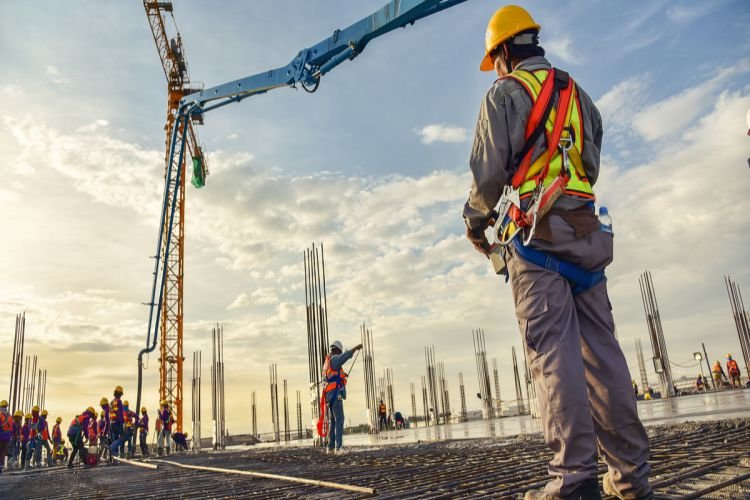 Construction is an industry that has historically been very behind the curve when it comes to technology. However, that is starting to change. In recent years, there has been a push to bring more innovative tech into construction to make the process more efficient, safer, and less costly.
Construction is an industry that has historically been very behind the curve when it comes to technology. However, that is starting to change. In recent years, there has been a push to bring more innovative tech into construction to make the process more efficient, safer, and less costly.
And when it comes to construction, there’s always room for improvement. With the ever-changing landscape of technology, there are always new ways to build better.
Here are just a few examples of how innovative tech is changing the construction industry for the better:
-
3D Printing
Three-dimensional printing technology, also known as additive manufacturing, has been around for several decades but is only now starting to make inroads in the construction industry.
Traditionally, construction projects have relied on subtractive manufacturing techniques, such as milling and drilling, to create building components. However, 3D printing offers many advantages over these older methods. First, it is much more precise, allowing for the creation of highly intricate components that would be difficult or impossible to produce using traditional methods.
Additionally, 3D printing is much faster than subtractive manufacturing, meaning that construction projects like residential outdoor concreting and industrial overhauls can be both completed in a shorter time frame. Finally, 3D printing is much more environmentally friendly than traditional construction methods, as it generates very little waste.
As technology continues to develop, 3D printing will likely play an increasingly important role in the construction industry.
-
Drones
Drones are quickly becoming a staple in the construction industry. Contractors and developers are using drones for tasks such as site surveys, planning, and even construction itself.
Drones offer several advantages over traditional methods. They are more precise, efficient, and safe. They can also reach places that are difficult or impossible for humans to access. As a result, the use of drones is leading to faster and more efficient construction projects.
Besides those, drones are helping to improve safety on construction sites. By eliminating the need for workers to climb to dangerous heights, drones are reducing the number of accidents and injuries.
As drone technology continues to evolve, even more, innovative uses will likely be found for this versatile tool.
-
Augmented Reality (AR)
In recent years, augmented reality (AR) has emerged as a powerful tool for businesses in a variety of industries. From retail to manufacturing, AR is being used to enhance the customer experience, improve communication and collaboration, and increase efficiency. The construction industry is no exception. AR is already being used in many ways to help construction professionals complete projects more efficiently and effectively.
One of the most popular applications of AR in construction is safety training. By overlaying computer-generated graphics in the real-world environment, AR can create realistic simulations of construction sites that can be used to train workers on safety procedures. This can range from domestic-level bathroom renovations to large-scale commercial office constructions. This allows workers to get the hands-on experience they need without putting themselves or others at risk.
AR is also being used to create virtual walkthroughs of construction projects. This allows architects and engineers to get a better sense of how a project will look and feel once it’s completed. Additionally, by walking through a virtual model of a construction site, stakeholders can catch potential problems before they become costly mistakes.
As AR technology continues to evolve, we’ll likely see even more innovative uses for it in the construction industry. With its ability to improve communication, collaboration, and safety, AR has the potential to transform the way we build.
-
Robotics
For centuries, the construction industry has relied on muscle power and manual labor to get the job done. But with the advent of robotics, that is all starting to change.
Construction robotics are now being used to perform a variety of tasks, from bricklaying and heavy lifting to surveying and site inspection. And because they can operate around the clock and in all weather conditions, they are helping to speed up construction timelines and increase safety on job sites. On top of that, construction robotics are also becoming more affordable, making them accessible to a wider range of contractors and developers.
Also, robots can be used to precisely place beams and columns during the construction process, reducing the risk of errors and increasing efficiency. In addition, robotics can be used to automate repetitive tasks such as welding and painting, which can improve safety by reducing exposure to hazards. Finally, robotics can be used to create virtual models of construction projects, allowing for more accurate planning and coordination.
As the construction industry continues to evolve, it is clear that robotics will play an increasingly important role in its future.
-
Building Information Modeling (BIM)
Building Information Modeling, or BIM, is another innovative technology that is quickly gaining popularity in the construction industry. BIM allows for the creation of a three-dimensional model of a building, which can be used to plan and design the construction project.
This detailed model can help to identify potential problems and conflicts before construction even begins. Also, BIM can be used to generate accurate cost estimates and schedules. As a result, BIM has the potential to save time and money on construction projects. Additionally, BIM can be used to create a virtual tour of the completed building, allowing stakeholders to get a realistic sense of the finished product. Perhaps most importantly, BIM allows for better coordination between architects, engineers, and contractors, leading to improved communication and fewer errors.
As the construction industry continues to improve and innovate, BIM will likely become an increasingly important tool.
Conclusion
The construction industry is constantly evolving, and new technologies are emerging all the time. In recent years, we have seen a rise in the use of innovative technologies such as drones, augmented reality, robotics, and building information modeling. These technologies are changing the way we build, and they have the potential to transform the construction industry. As we move into the future, it is clear that these technologies will only become more important.




